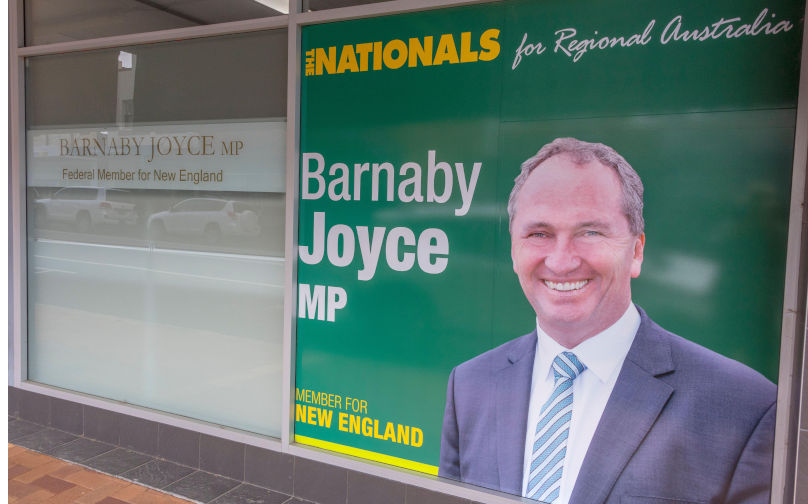The $60b energy boom hidden in Barnaby Joyce’s backyard
May 1, 2025
It’s the kind of economic windfall that regional Australia dreams of: $60 billion in investment, 4000 construction jobs, more than 5000 ongoing jobs, and enough clean energy to power half the country.
But the local MP who is sitting on this renewable energy goldmine isn’t cheering.
According to new research from the Australian National University, the electorate of New England in northern NSW is the most valuable patch of land in Australia for solar and wind – capable of delivering half the country’s electricity needs.
But instead of being supported by a champion for the region’s clean energy future, New England is represented by one of the country’s most prominent critics of wind and solar, former Nationals leader Barnaby Joyce.
The new research, led by senior ANU researcher Dr Cheng Cheng, shows New England could host nearly 100 terawatt hours of renewable energy generation each year – almost half of Australia’s current electricity demand.
“There’s billions on the table and many local jobs to match,” Cheng says in an interview on the latest episode of _SwitchedOn Australia_ podcast.
So how did researchers land on New England as the standout? Cheng’s team divided the entire country into tiny 250-by-250 metre cells and analysed each one for renewable potential and cost, taking into account solar irradiation, wind speeds, and proximity to existing high-voltage transmission infrastructure.
“New England stands out first because it has a high voltage transmission line right through it — the major transmission line from Sydney to Brisbane — and then it also has good solar and wind resources,” Cheng explains.
Other top-performing electorates include Riverina and Calare in NSW, Maranoa and Groom in Queensland, Grey and Barker in South Australia, and Nicholls and Wannon in Victoria.
All sit near major transmission lines and could host tens of terawatt hours in clean generation – although, it should be stressed, that grid capacity would need to be expanded and reinforced to accommodate that much generation.
But New England is in a class of its own. In the high-solar scenario, it could generate more than 99 terawatt hours annually. Even under a high-wind model, which typically produces less in this region, it could still generate 70 TWh – making it a cornerstone for Australia’s net-zero ambitions.
And yet, Joyce has been one of the nation’s loudest opponents of renewable energy, routinely decrying wind and solar projects in regional areas.
He’s called large-scale renewables “completely and utterly absurd” and has championed a return to coal, while pushing back against the transmission projects needed to make clean energy work at scale.
The irony isn’t lost on Cheng, who says that regions like New England risk missing out on the economic benefits if they don’t embrace the transition.
“If one region… is unwilling to participate, there might be an attractive site in the neighbouring region, and the developers might go there,” Cheng says. “They might just miss the investment and the benefits.”
There’s a lot on the line. ANU’s modelling sets a national generation target of 550 TWh per year — double current demand — to account for the electrification of transport, heating and industry.
Meeting that demand could unlock $380 billion in investment, 27,000 construction jobs, and 33,000 ongoing roles. And this doesn’t even include rooftop solar, which has its own constraints and advantages.
But one of the most powerful takeaways from Cheng’s work isn’t just about where developers should go – it’s about making sure local communities have a seat at the table.
“The solar and wind developers, they have extensive information about which places are the best… but the local communities don’t,” he says.
By publishing this data, Cheng hopes to tip the balance of power, so “locals know how valuable their land is in terms of solar and wind projects… so that can hopefully help the local landowners to negotiate together with the developers.”
For New England, the opportunity is clear: leverage world-class renewable resources, attract billions in investment, and create thousands of jobs.
Alternatively, just let the benefits flow to neighbouring electorates that are more willing to lead.
Republished from RENEW ECONOMY, 29 April
